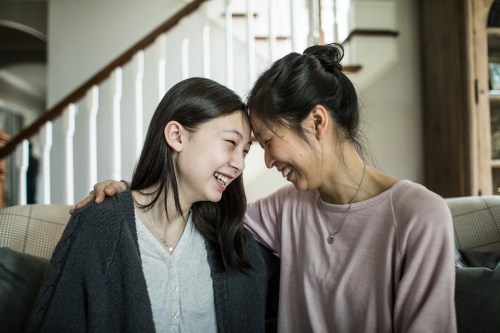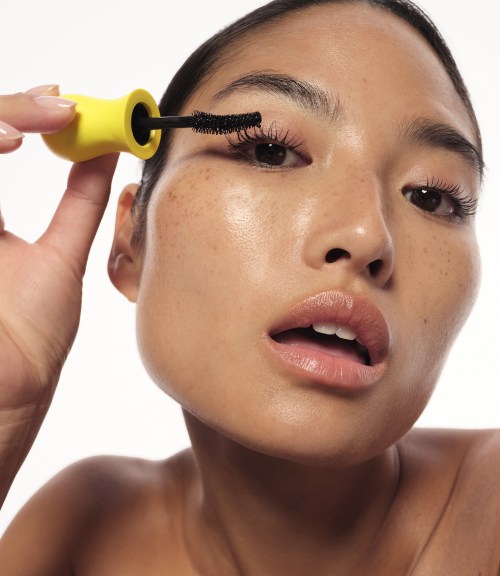Our editors independently select these products. Making a purchase through our links may earn Well+Good a commission
Generation Z, as in people born between 1997 and 2015, is the queerest generation to date. One 2020 Gallup poll found that nearly one in six (15.9 percent) of respondents aged 18 to 23, a segment of the Gen Z age bracket, report identifying as queer or transgender, compared to 9.1 percent of millennials and just 3.8 percent of Gen X-ers. Two years prior, a survey of all-aged Gen Z-ers reported that percentage as being twice as high, citing that 52 percent of those polled identify as something other than “exclusively heterosexual.” So, if you’re a parent to a Gen Z-er, it’s increasingly likely that you may find yourself faced with figuring out how to respond to your child coming out—and sooner than you may think.
Experts in This Article
queer sex therapist and director of The Gender &
LGBTQ+ expert and counselor
You see, in addition to coming out in greater numbers, members of Gen Z are also coming out at a younger age. Across generations the median age for coming out for all LGBTQ+ adults is 20, while for Gen Z, the average is 17.
These numbers nod to the growing acceptance of the LGBTQ+ community, and suggest an upward trend in the number of people who feel comfortable coming out (or, at least, sharing their identity with researchers). But—and this is important—these stats do not negate the fact that LGBTQ+ children are still at a significantly higher risk for suicide, depression, anxiety, and stress, and bullying in school, compared to their cisgender, heterosexual peers.
The good news for both you and the child you love is that research shows that having access to supportive adults can help LGBTQ+ kids avoid self-harm and lessen their risk of suicide, as well as other mental health outcomes, says mental health professional Kryss Shane, LMSW, author of The Educator’s Guide to LGBT+ Inclusion. And that support can come as early as the first, second, and third conversations about their identities, she says.
Here, find a guide for how to respond when your child comes out to you as LGBTQ+, as well as how to show your continued support after the initial conversation.
How to respond to your child coming out
Maybe your young one has been talking about their similar-gendered BFF the way you remember talking about a crush. Maybe your intuition has been talking to you. Or maybe just you want to be prepared. Whatever the reason, if you’re reading before your child has come out to you, know this: Your reaction when (if) they do, is hugely important. Hugely.
If your initial verbal and/or non-verbal reactions are ones of disgust, disappointment, or fear, it will read that you are rejecting them. “You need to listen, respond, show your love and support and do your best not to over-respond or under-respond,” says Jesse Kahn, LCSW, director and sex therapist at The Gender & Sexuality Therapy Center in New York City.
If you’re unsure of what to say, keep it simple:
- “Thank you for telling me.”
- “I love you.”
- “I’m so glad you told me.”
- “I’m so proud of you.”
You want to stay away from phrases like “I’ve always known” or “I’m not surprised.” Why? For starters, they’re often built on limiting stereotypes about what being LGBTQ+ looks like, says Kahn. “Comments like [those] also diminish the process and potential struggle the child who just came out had to go through to get to a point where they were able and ready to tell you,” they say.
Also: Please avoid suggesting that they’re just experimentation or going through a phase. Your child’s sexuality and gender may continue to evolve as all people’s sexuality and gender do, but your job right now is to accept them and respect them as they are in this moment.
How to be a supportive parent after your kid comes out to you
In your child’s lifetime, coming out will not be a one-and-done process, and this won’t be a one-and-done exchange. Here’s how to be the support system your LGBTQ+ child deserves after that initial conversation.
Continue to show your love and support
You and your child will have a series of conversations that take place over the course of days, weeks and years as your child grows up and finds new language for what they’re experiencing, and as you work as a team to determine what that means for things like sleepovers, dress preferences, dates, and Prom, if anything.
Throughout these conversations, your move is to be their cheerleader. “By being consistently supportive, you are consistently affirming your child and undermining any fears they have that you may judge or dislike them for who they are,” says Shane.
Do your research
Unless you yourself are part of the LGBTQ+ community—and truthfully, even if you are—you likely have quite a few questions about things like what words to use, what this means for their future, and more.
Some of these make conversations with your child. For example, you may say:
- “What does [insert label here] means to you?”
- “Are there any resources you’ve used or articles or books you’ve read about being [insert label here] that you’d like me to read?”
- “Do you feel comfortable telling me when you first realized you might be [insert label here]?”.
But Kahn suggests not relying on your child to be your only LGBTQ+ information center. “I highly recommend checking out GLAAD’s Glossary of Terms,” they says. “Knowing how to use the language your child is using can be a huge source of information, and it communicates to your child that you are doing your best to support them.”
Other resources include: My Kid is Gay Website, This Book Is For Parent’s of Gay Kids by Danielle Ownes-Reid, and Unconditional: A Guide To Loving and Supporting Your LGBTQ Child by Telaina Erikson.
Ask for consent before sharing this information
It makes sense that you’d want to share this new information with other family members and close friends. But Shane recommends asking your child’s permission to do so first. A child’s LGBT+ identity is both a part of their own story and something that may put them at risk,” she says. “When an adult shares this information with someone without the child’s prior consent, it can set the child up to lose agency and strength within their own life, which can result in a negative sense of self.”
Further, the more people who know, well, the more people who know. “This can lead to an entire community, the child’s school, and less accepting family members finding out,” she says. “When this occurs before the child is ready, it can lead to harm, which is obviously not what any parent wants.”
If you want to talk to someone about it, ask your child for consent first. For example:
- “Is this something that you’ve told or are planning to tell [X]?”
- “How would you feel about me sharing this with [X]?”
- “I have a coffee date with [X] tomorrow who’ son is also gay, would you be comfortable with me talking to her?”
Provide your child with LGBTQ+ resources
The sad reality is that, likely, your child will not learn about LGBTQ+ people, nor get queer representation in the classroom. Their history textbooks will not include LGBT history, unless you live in New Jersey, Illinois, California, and Colorado. Their sex education courses won’t cover the sex and dating issues that will most affect your child, unless you in live in one of the 11 states that requires affirming sex education. And because many LGBTQ+ teachers are not out at school due to safety concerns and fear of harassment and job loss, they likely won’t see queer adults surviving and thriving in the classroom.
As a parent, you have the opportunity to provide age-appropriate material that can fill these gaps—and you should. Providing your child with queer representation can help them feel less alone, and less afraid if they feel embarrassed about this revelation, says Shane.
You may, for example, buy you child Queer: A Graphic History by Dr. Meg-John Barker, which tracks the people, ideas, and events that have shaped queer history in a child-friendly medium. Or, when your child begins receiving sex education at school, you may leave a copy of the queer-sex education text Girl Sex 101 by Allison Moon.
Seek out people to talk to, if you need
If you are struggling to accept this news, feeling confused, or feel like you’re mourning the loss of the life you thought your child would have, Shane recommends seeking out a specialized mental healthcare provider. Queer-inclusive, LGBTQ+ identified, and LGBTQ-friendly therapists will all be able to help you process, while validating and explaining your child’s identity, she says.
If you’d prefer peer-based support, another option is check out an LGBTQ+ parent support group like PFLAG, The LGBT Center Parent Support Group, and COLAGE. “All parents of queer and trans kids can benefit from a support network of other parents with queer and trans kids,” says Kahn.
If you or someone you know is at risk of hurting themselves, call an LGBTQ+ crisis hotline like LGBT National Hotline at 888-843-4564.
Sign Up for Our Daily Newsletter
Get all the latest in wellness, trends, food, fitness, beauty, and more delivered right to your inbox.
Got it, you've been added to our email list.











